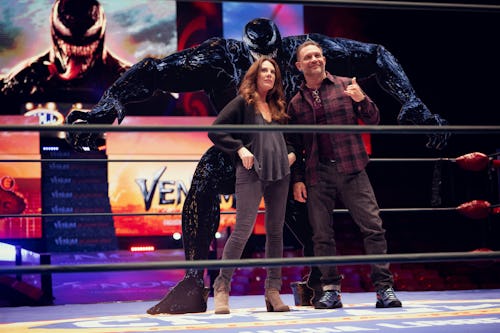
Kelly Marcel never wanted to be a director. “I'm much, much happier sitting in my pajamas at home behind my computer screen,” she tells Inverse. And yet, here she is at a fancy hotel in midtown Manhattan on a Sunday morning, definitely not wearing pajamas, and answering questions about her directorial debut — Venom: The Last Dance.
Marcel talks like a writer, speaking in full, thoughtful sentences with barely an “um” or “like” in sight. After interviewing her for 20 minutes, it’s easy to see how she’s risen so quickly from an unknown screenwriter working at a video rental store in London to the secret weapon behind Sony’s most successful Spider-Man franchise (aside from the ones that actually feature Spider-Man). Now, as the Venom trilogy comes to a close, Marcel has made the leap from writer to director — with plenty of encouragement from her star and longtime conspirator Tom Hardy.
“It was a really wonderful thing to be able to see the last one through from inception to the finishing line,” she says. “It’s been an amazing journey.”
Of course, Marcel’s journey is far from over. After making her Hollywood debut with a sci-fi series she sold to Steven Spielberg, she’s spent the last 10 years building an impressive filmography that’s hard to define — from a Walt Disney biopic to 50 Shades of Grey — all while figuring out how to turn Spider-Man’s most famous villain into a superhero of his own. But with the franchise finished (at least, for now), what’s next for Kelly Marcel? To find out, we have to go back to the very beginning.
“I had no money”
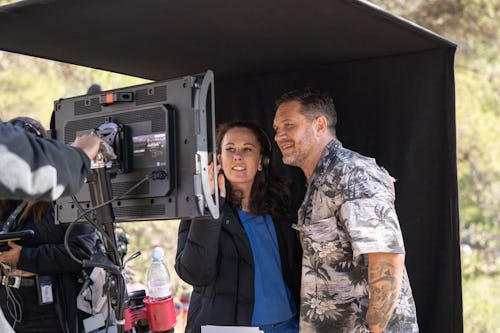
Kelly Marcel’s story starts with an idea, but not a simple one. Marcel had an idea for a post-apocalyptic time-travel TV show where humans flee a dying Earth by traveling 85 million years into the past through a one-way vortex, forcing them to coexist with dinosaurs and other prehistoric creatures. At the time, Marcel was an aspiring screenwriter working at Prime Time Video in southwest London. (Back then, Tom Hardy was an aspiring actor running a workshop at a pub around the corner who sometimes helped her hand out DVDs, but more on that later).
“So I left and went back to work in the video store, much to the chagrin of my dad.”
Marcel had just started working with a new agent who told her to fly to Los Angeles and pitch the dinosaur TV show idea, which sounded like an impossible task.
“I had no money,” Marcel says. “I didn't even know how I was going to pay to get to LA, but I did. And I went out there for four weeks and sold that TV series.”
Terra Nova was executive-produced by Steve Spielberg and premiered on Fox in 2011. It ran for one season, but Marcel didn’t even stick around that long. Early in the process, she felt the show was going in a direction she wasn’t equipped to write for. “So I left and went back to work in the video store, much to the chagrin of my dad.”
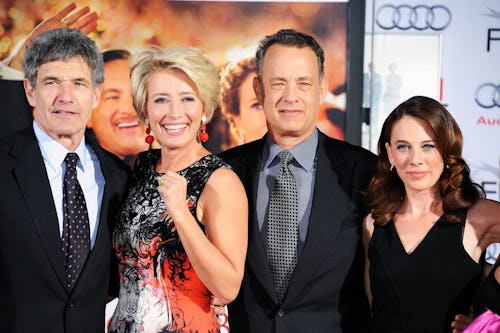
Marcel’s next big break came from British film producer Alison Owen, who approached her with a script about P.L. Travers, the author of the Mary Poppins books. The original version was a classic biopic that covered Travers’ entire life, but Owen wanted to rework it to focus on the two weeks she spent at Disney Studios making the Mary Poppins movie. There was just one problem: “None of us actually had the permission of Disney to do it.” They wrote it anyway, and Saving Mr. Banks ended up on the Black List. Soon afterward, Disney bought it, Tom Hanks was cast as Walt, and Marcel’s career as a Hollywood screenwriter officially began.
Her training to be a director also started on the set of Saving Mr. Banks, where director John Lee Hancock gave her a crash course in filmmaking. She resisted at first — “I'm really happy just sitting at home in my pajamas writing,” Marcel insists not once but twice in our interview — but ultimately gave in and is clearly thankful for the experience.
“Everybody was kind of struggling to find what it was tonally.”
“He would literally come to set in the mornings and ask: What's your shot list for the day? What would you be doing? It was a lot of pressure,” she says, “but I learned that Clint Eastwood had done the same thing for him on a movie that he had written that Clint had directed. So he was kind of passing it on.”
When Marcel finally did become a director for Venom: The Last Dance, she passed that experience on herself, giving her assistant, Brett Bacchus, a chance to film some cutaway shots. “I threw him in the deep end,” she says. But again, we’re getting ahead of ourselves.
Finding the comedy in Venom
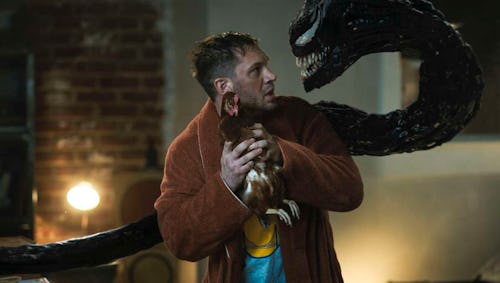
Marcel owes her time in the Sony Spider-verse to Tom Hardy. “We have a shorthand with each other,” she says. After meeting in London, they initially worked together on Bronson, the 2008 prison drama starring Hardy as a real-life bare-knuckle boxer and famously violent criminal. He later brought her to Australia for some uncredited rewrites on Mad Max: Fury Road.
So when Hardy landed the lead role of Eddie Brock in Venom, it was only a matter of time before Marcel got involved. By the time she joined the production, there was already a script, but it still needed some work.
“Everybody was kind of struggling to find what it was tonally,” Marcel says, “really figure out who Venom was, who Eddie was. So we worked together throughout that movie, rewriting the whole way through.”

Their big breakthrough came in the form of one of Venom’s most iconic scenes: the lobster tank. Originally, it was meant to be a simple scene where Hardy’s character shows up at a fancy restaurant and tells Michelle Williams he’s been infected by some sort of parasite. But when they arrived at the set, everything changed.
“There was this big open space that had the wooden block in the center of the dining room,” Marcel recalls, “and Tom said, ‘What's that going to be?’ And they said, We're building a lobster tank for the set.’ And he was like, ‘Good, because I'm going to get in it.’”
The prop guys seemed concerned, but Hardy and Marcel were off to the races.
“We wanted an epic conclusion.”
In the movie, a sweaty and manic Tom Hardy does indeed jump into the tank in an attempt to cool off, only to then reach in, grab a live lobster, and take a large bite. Upon Venom’s release, the audience reaction to this scene convinced Marcel she was taking the franchise in the right direction.
“We were in a movie theater and the minute he got in the lobster tank and bit the lobster, the audience knew they were allowed to laugh,” she says. “It was almost like this sense of, Oh, this is what it is, this is what the tone is. And so we very much leaned into that in Venom 2.”
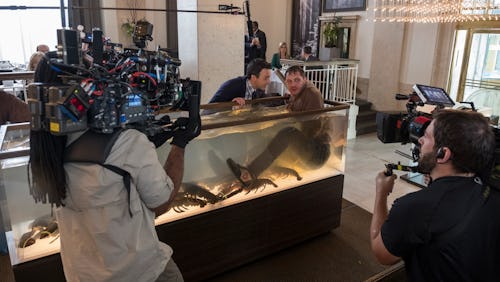
If Venom was an accidental comedy about a struggling journalist and the maniacal alien that takes over his body, then the sequel, Venom: Let Them Be Carnage was an unabashed romantic comedy. Marcel compares the movie to The Seven Year Itch, a classic rom-com about a married man who loses interest in his wife after Marilyn Monroe moves into the apartment above his. It’s not a perfect parallel with the plot of Let Them Be Carnage, but the sequel does explore Eddie and Venom’s relationship, splitting them apart until they ultimately realize they belong together.
“We loved the idea of them breaking up and that the movie ultimately would teach them that they kind of needed to come back together in the end,” Marcel says. “And then that's where we start Venom 3.”
The Last Dance

When it came to Venom: The Last Dance, Marcel was determined to do everything the first two movies couldn’t. That meant leaving San Francisco, which served as Eddie Brock’s home base for the first two films, and, more importantly, pushing the film’s special effects team to show Venom in daylight instead of his usual environs of dank apartments and nighttime exteriors.
But most importantly, she wanted the final movie in the trilogy to feel like just that.
“We wanted an epic conclusion,” Marcel says. “And the only way to do that is to get out into epic landscapes and scenery and have them meet other people.”
The Last Dance mostly pulls this off. Eddie and Venom do indeed set out on a road trip (Marcel says the cinematic inspiration for this movie is the 1988 crime-action-comedy Midnight Run, which pairs Robert De Niro and Charles Grodin as unwilling travel buddies), but it also ups the stakes to an apocalyptic degree, jamming in so many alien monsters, MacGuffins, and military commandos that they all threaten to steal Venom’s well-earned spotlight.
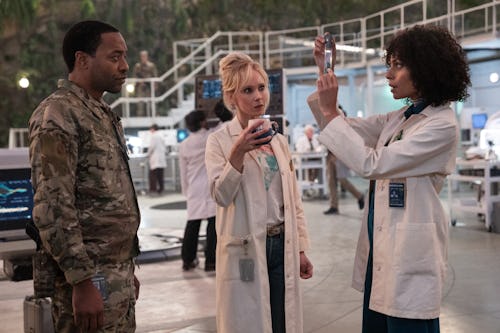
Venom 3 might be a step down from the comedic heights Marcel and Hardy achieved in Venom 2, but it’s undeniably an achievement in terms of pure cinematic spectacle. For one thing, the CGI used to depict Venom himself is flawless, which is no longer a given these days in even the biggest of big-budget superhero flicks.
“A big challenge was Venom in daylight,” Marcel says, before giving all the credit to visual effects supervisors John Moffatt (“my ride or dıe”) and Aharon Bourland (“also a genius”). She points to the movie’s big finale, which, without spoiling anything, involves its titular symbiote making a heroic sacrifice, as an example of Moffatt and Bourland’s talent.
“Venom doesn't really have a nose or ears or eyebrows or any of the things that make your face,” Marcel says, “and he has a great big smile all the time. So to make him sad is really hard.” The team pulled this off by increasing the size of his eyes in the movie’s final scenes, which allowed them to amp up his emotions. “Those were challenges that John and Aaron overcame in such an extraordinary way.”
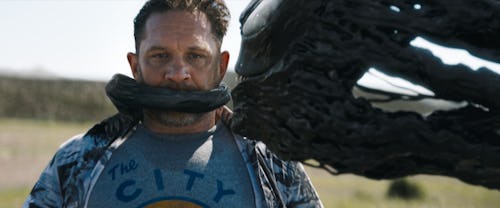
The Last Stand also leans heavily on practical effects. In an earlier scene, Eddie Brock gets caught in some raging river rapids. You might assume this is all CGI and green screens, but that really is Tom Hardy getting tossed around by rushing water.
“Tommy was in a massive, massive rapids tank that we built that was like 200 feet long with six pumps throwing him down a river,” Marcel says. “It was crazy. He was there for two weeks, underwater.” The studio, unsurprisingly, pushed back when she first proposed the idea, but Marcel refused to give in. “I know that scared a lot of people. But it worked, and it makes the movie feel that much bigger.”

In many ways, Marcel succeeded in making The Last Stand feel a teensy bit less like a massive studio tentpole and a smidge more like independent production.
“We played around a lot,” says actor Rhys Ifans, who has a supporting role in the film. “We improvised. There was time and encouragement to do that.”
“We are kind of, ‘Yes, and’ people,” Marcel concurs. “We never block any ideas. We’re open to trying anything.”
“We definitely wanted to end our trilogy but leave room for there to be other spinoffs.”
Ifans also praises the writer-director for her work across the entire trilogy, which he was eager to join. “When you work with someone like Kelly as an actor, you're like the cat who wants to bring mice to the doorstep,” he says, adding that he’s also impressed by Marcel and Hardy’s willingness to bring their story to a genuine conclusion. “There's such an appetite, especially with superheroes, for us to want more, more, more, more. For them to go on eternally. So it was really nice to be part of the closure of the trilogy.”
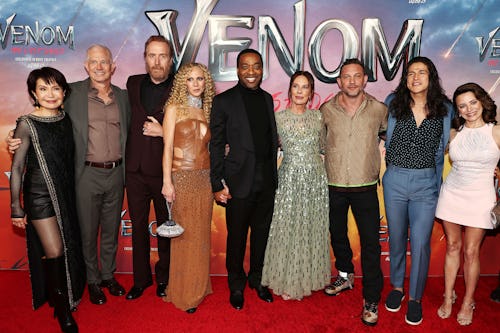
Of course, this is a superhero movie, which means that nothing really ends. Tom Hardy has hinted in recent interviews that he’d be willing to return to the role of Venom for the right story (or to fight the right Spider-Man).
For her part, Kelly Marcel is playing things a little more coy, but she’s willing to admit that The Last Stand’s introduction of Knull (a new CGI supervillain voiced by Andy Serkis) is carefully calibrated to set up a future franchise that may or may not include Venom himself.
“It's just an introduction to Knull,” she says. “It's just the beginning for the King in Black. We definitely wanted to end our trilogy but leave room for there to be other spinoffs — and definitely room for Knull to now go out there and shine.”
FTTT
0 Comments